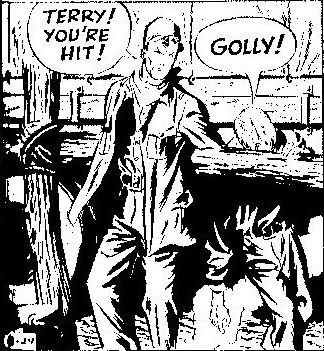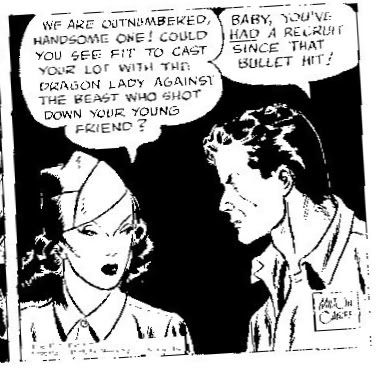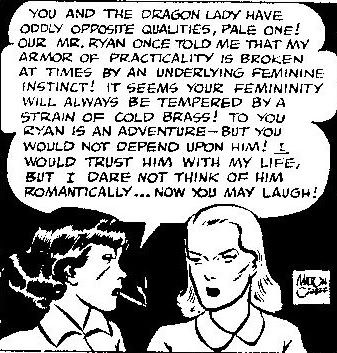Terry and the Pirates
IDW has been doing an amazing job of reprinting Terry and the Pirates. The entire classic strip had previously been reprinted by NBM, and as much as I treasure those NBM editions, IDW's version puts NBM's to shame in terms of the quality of the reproduction of the strips and the presentation.
Volume 3 (covering 1939 and 1940) is key for the strip. I think when Caniff started the strip, he wanted little more than to put his heroes through a series of knockabout adventures in the mysterious East. He didn't think too much about accuracy, and not at all about imperialism or racism--attitudes that, alas, permeate the strip. But the Japanese invasion of China in 1937 meant that he couldn't really produce an apolitical, ahistorical comic set in China. The reality of the situation had to be acknowledged.
His situation was complicated by the fact that his publisher was an arch-isolationist. Caniff couldn't even refer to the Japanese as Japanese, perhaps because Tribune publisher Colonel McCormick was opposed to stirring up anti-Japanese feeling. (They are referred to as the "invaders." Later, Nazis will be referred to as "raiders"--until Pearl Harbor, of course.) But when you read the strip now with the full benefit of hindsight, it seems obvious that Caniff was pro-Chinese and believed that eventually, fighting the Nazis and the Japanese was something that America would have to do as well.
But how could his strip reflect this when the main character was a boy of 15 or so? Caniff had to 1) mature Terry quick, and 2) involve Terry and Pat Ryan in the fight for China against the Japanese. The maturing of Terry is a process that starts in this volume and concludes in the next. Terry stops wearing short pants and fills out, gets romantically involved with April Kane, is taught to dance by the Dragon Lady, and, critically, is wounded while fighting with the Dragon Lady's rebels against the Japanese puppet warlord Klang.

This also help put our heroes on the side of the Chinese. Their fight is not ideological or political, which presumably helped it get by McCormick.

The Dragon Lady, who had basically been nothing more than the leader of a criminal gang, is now the leader of a Nationalist guerrilla army. She is ruthless--willing to sacrifice her underling Hu Shee to advance her cause. This disgusts the wealthy philanthropist Raven Sherman. So Caniff gives the Dragon Lady a little speech--which incidentally hints at Caniff's own apparent belief that the U.S. would soon enter this war (even though that would not happen for another year).

(This speech rings disturbingly true today.) Weirdly enough, this panel is a repeat of one that appeared a few weeks earlier.

This panel speaks to the romantic complications which are a major and very pleasurable part of this volume. Romance and pure action.

The politics are buried down deep. Caniff knew what he could get away with. But despite that, he was subtly preparing his millions of American fans for the conflagration to come. And in doing so, he brought the very best of himself out, turning his frankly offensive Chinese caricatures (Connie, Big Stoop, the Dragon Lady) into patriots who love their country. They may not have become exactly three-dimensional characters, but they were much much better than they had been.

0 Comments:
Post a Comment
Subscribe to Post Comments [Atom]
<< Home